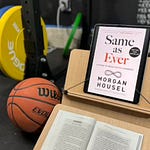From Save the Cat:
Go back to Blockbuster (boy, are they tired of you by now) and check out the 6-12 movies in the genre of the movie you’re writing. Sit and watch as the beats of these films are magically filled into the blanks of the BS2.
(BS2 being the beat sheet — check out an example beat sheet for The Martian.)
I was listening to a podcast with Seth Rogen and Evan Goldberg (I thiiink it was this episode of Creative Processing with Joseph Gordon-Levitt) and they talk about how they were lucky to have a school very close to 2 video rental places. Those places then had their price wars to the point that you could rent 7 movies for 7 bucks for 7 days.
I’ve definitely been in those video rental spots.
Not theirs.
But my hometown’s version of it. The catch is usually that the movies need to be 7 years old. At least. Okay so it’s probably just that new releases were excluded.
But you’ll just grab whatever movies, some you’ve seen already, and then just watch them. You start seeing the patterns and get a sense for story structure.
Rogen and Goldberg took it a step further and wrote their first movie and then the next and the next.
One of my favorite books of interviews is Sick in the Head by Judd Apatow. He’s interviewed comedians throughout his life and shares a bunch in that book. (The best pairs of interviews are with the same comedian but decades apart—Apatow in high school and then after become famous.)
Oh yeah but this reminds me of what Apatow says about structure and learning to write:
Many years ago, when I first tried to write a good screenplay, I wrote a screenplay with Owen Wilson. We drove across America, trying to write it, and I remember being in a hotel, watching The Graduate. We took out notepads and outlined it because we were trying to understand how it worked and we didn’t understand.
Outline things you enjoy. Break them down into components. Practice writing different components.
You can practice scenes for movies and TV with the goal being to swing emotion from negative to positive or positive to negative
Hunter S. Thompson typed out Hemingway and Faulkner stories to learn prose.
Some old copywriters would copy successful sales letters by hand
You can walk through a magazine aisle and look at fitness magazines and see the future selves promised in all the headlines.
Writing can be broken down into pieces you can practice.
Putting it together effectively is another thing.












Share this post